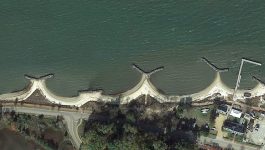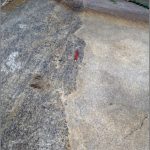THE BASIC ROCK TYPES
-
Igneous: The New – rocks which have congealed from a molten mass. They can either be intrusive, like granite, or extrusive, like basalt (lava).
-
Sedimentary: The Used – rocks that have formed by consolidation of organic or inorganic solid fragments, carried by, suspended in, or droppped by wind, water, or ice and deposited in layers.
-
Metamorphic: The Refurbished – a rock formed from preexisting solid rock by mineralogical, structural, and chemical changes in response to extreme changes in temperature, pressure, and/or shearing stress.
-
The Rock Cycle – how each rock type comes into existence, highlighting in which province each can be found.
TIME & DISTANCE UNITS
-
Please refer to the Geologic Time Table for ages and descriptions of Eras (e.g. Paleozoic, Mesozoic), Periods (e.g. Cambrian, Cretaceous), and Epochs (e.g. Pliocene, Miocene).
-
Ma – mega-annum – a period of one million years
-
Ga – giga-annum – a period of one billion years
-
kilometer – a distance of 1000 meters, equivalent to 0.62 mile (where one meter is equivalent to 3.3 feet).
allochthonous (Blue Ridge) – a rock that was transported a great distance from its original deposition by some tectonic process, generally related to overthrusting, recumbent folding, or gravity sliding.
anorthosite (Piedmont) – a visable crystalline plutonic rock almost completely composed of plagioclase feldspar with minor amounts of pyroxene and olivine.
bolide – large extraterrestrial mass, such as a meteor or asteroid
clastic sediments (Valley & Ridge) – deposits of rocks or sediemts composed of clasts which have been transported from their place of origin by mechanical agents.
crustal shortening (Blue Ridge) – a reduction in size of the land area of the Earth’s crust due to tectonic influences such as collisions with other landmasses, resulting in mountain building (orogenies).
crystalline rock (Blue Ridge) – 1. Rock made up of minerals in a clearly crystalline state. 2. Igneous and metamorphic rock, as opposed to sedimentary rock.
dikes (Piedmont) – An intrusive rock body that is substantially wider than it is thick. Dikes are often steeply inclined or nearly vertical.
escarpment (Blue Ridge, Coastal Plain) – a cliff or steepslope of some extent, generally separating two level or gently sloping areas, and produced by erosion or faulting. Also known as as a scarp.
fold and thrust belt (Valley & Ridge) – a linear region that has undergone folding or some other form of deformation during periods of mountain building
grabens (Piedmont) – a block of the earth’s crust, generally with a length much greater than its width, that has dropped relative to the blocks on either side.
granitoids (Blue Ridge) – igneous rocks that have a composition very similar to granite (quartz and alkali feldspar, with subordinate plagioclase and biotite and hornblende).
granulite-facies metamorphism (Blue Ridge) – a group of gneissic rocks characterized by a granoblastic fabric and formed by regional dynamothermal metamorphic at temperatures above 650° and pressures of 3000-12,000 bars.
Grenvillian basement (Blue Ridge) – a complex of intrusive igneous and metamorphic rocks emplaced during the Grenville orogeny one billion years ago.
Iapetan rifting (Blue Ridge) – over one billion years ago, the landmasses which would one day become known as Africa and Europe were attached to eastern North America. When they broke up, or rifted apart, the Iapetus Ocean was formed where that Atlantic Ocean would be 900 million years later. The Greek god Iapetus was the father of Atlas, namesake of the Atlantic.
imbricated (Piedmont, Valley & Ridge) – tabular masses that overlap one another and are inclined in the same direction.
karst topography (Valley & Ridge) – a landscape formed over limestone, dolomite, or gypsum, and characterized by sinkholes, caves, and underground drainage.
kyanite (Piedmont) – Al2SiO5, a valuable metamorphic mineral used commercially as heat sinks (e.g.spark plugs and porcelain). Its long-bladed blue crystals are distinctive and give the mineral its name (Greek kyanos, blue). It is an indicator of deep-seated, regional metamorphism of clay-rich sediments.
massif (Blue Ridge) – a massive block of rock within an orogenic belt, usually more rigid than the surrounding rocks, and commonly composed of crystalline basement or younger plutons.
metabasalts (Blue Ridge) – a metamorphosed basaltic rock, also referred to as a greenstone.
monadnocks (Piedmont) – a remnant hill of resistant rock rising abruptly from the level of a peneplain (any land surface changed almost to a plain by erosion); commonly represents an outcrop of rock that has withstood erosion.
orogeny (Blue Ridge, Valley & Ridge) – the process or processes of mountain formation, especially the intense deformation of rocks by folding and faulting which, in many mountainous regions, has been accompanied by metamorphism, invasion of molten rock, and volcanic eruption.
plutons (Blue Ridge) – a large igneous intrusion.
transgressions (Coastal Plain, Blue Ridge) – geologic evidence of landward extension of the sea often, but not always, characterized by a sandstone grading into shale into carbonate sequence.

